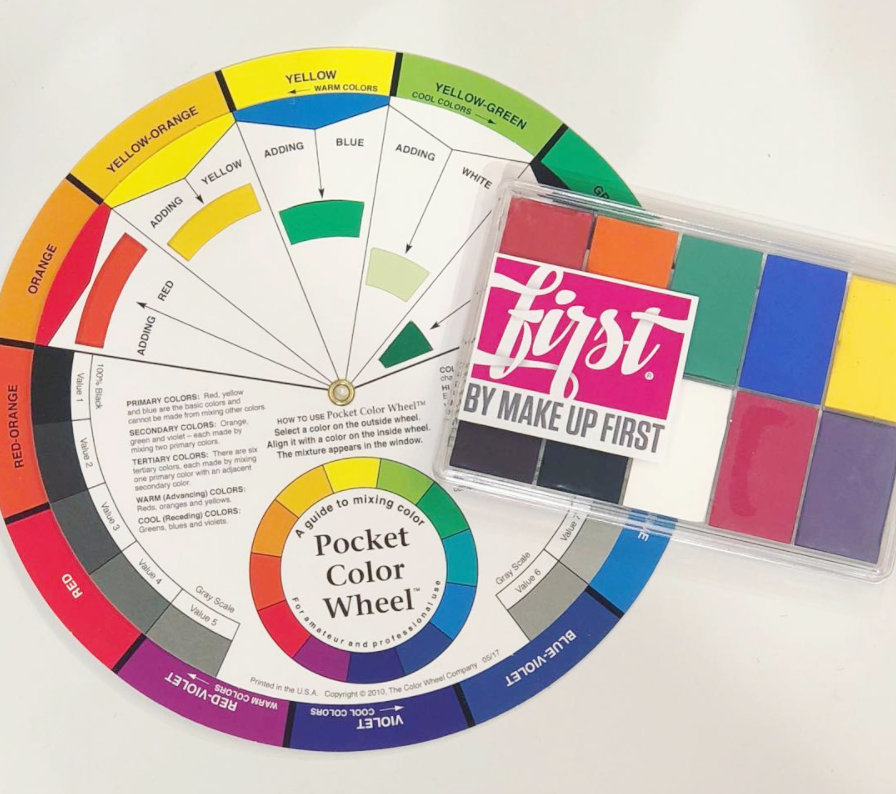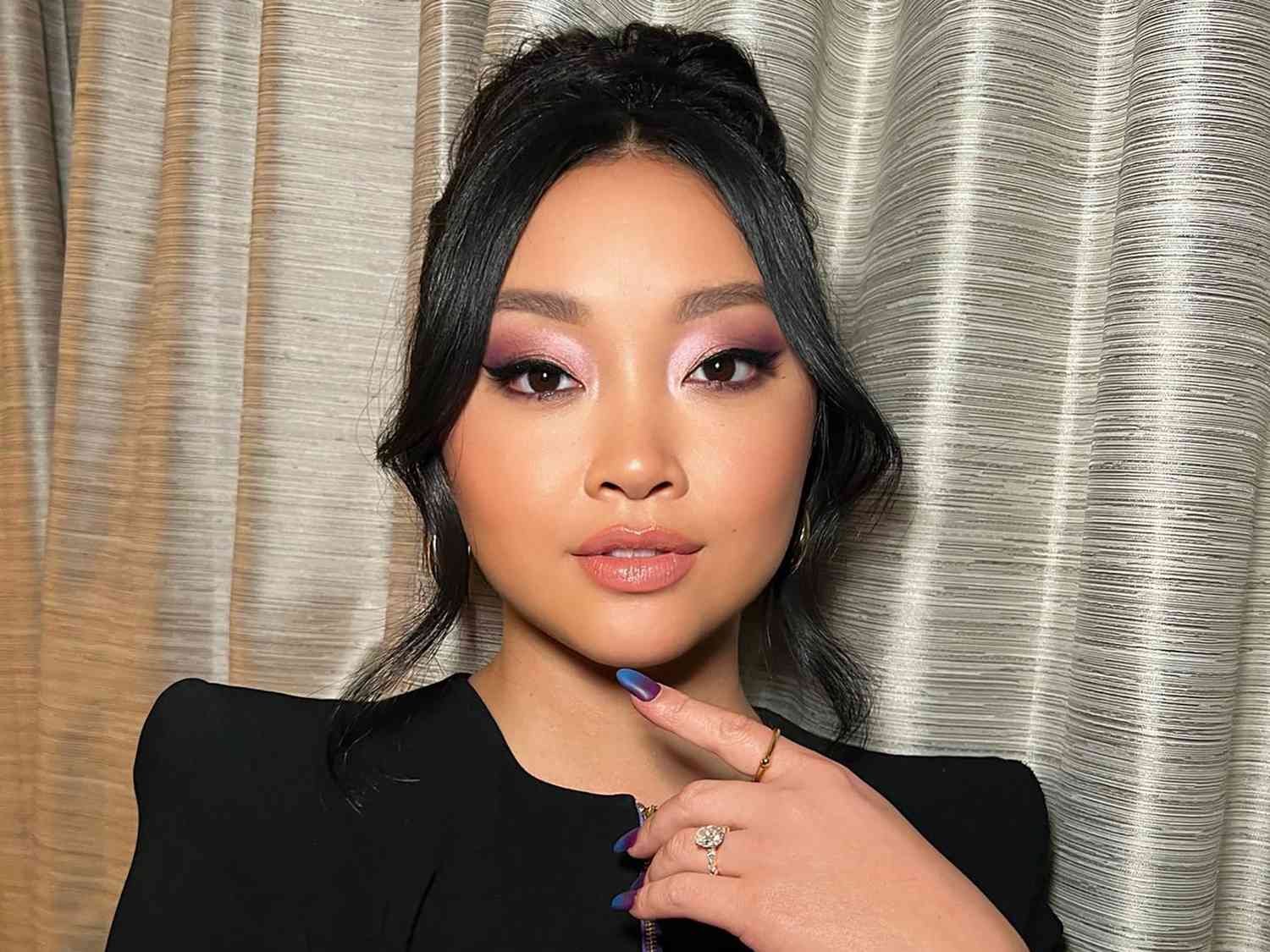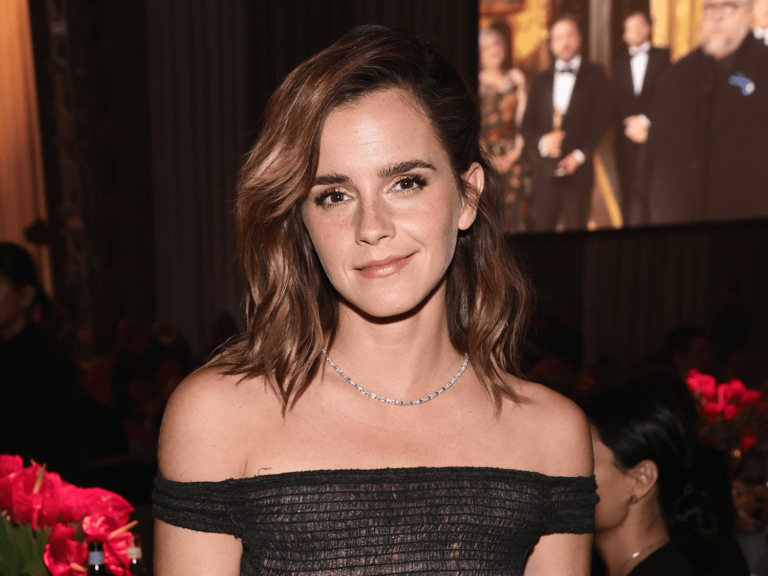Unlock Eye Makeup Magic: Color Theory Secrets Revealed!
Master the art of eye makeup by applying color theory principles suggested by makeup artists. Select hues that enhance your eye color for a bold look or choose similar tones for subtlety.
Eye makeup can transcend from ordinary to extraordinary with the right application of color theory. Pro makeup artists leverage this principle to select shades that not only complement but also intensify the natural color of the eyes. Understanding color theory means recognizing how certain colors can amplify your look—like how copper tones can make blue eyes pop or purples can highlight the depth of brown eyes.
Using this knowledge creates a roadmap for crafting eye makeup that truly stands out. Whether aiming for a natural enhancement or a dramatic flair, color theory is your ally in curating a stunning visual impact. With this approach, you can expertly choose eyeshadows and liners that not only flatter but also reflect your creative vision.
:max_bytes(150000):strip_icc()/InStyle_NeutralColor_lead-5422554e95d6466c8a6f1d25fce24e4c.jpg)
Credit: www.instyle.com
The Essentials Of Eye Makeup Color Theory
Mastering the art of eye makeup goes beyond skillful application; it’s a blend of science and art. Color theory in eye makeup is the secret weapon for creating flawless looks. Grasp these concepts and watch your eye makeup game soar to new heights.
The Role Of The Color Wheel
The color wheel is a fundamental tool for makeup artists. It explains how colors mix and the relationship between them. Use this wheel to identify which shades will complement your eye color, create contrast, or offer a subdued tone. Nailing the perfect look starts with understanding this color map.
Primary, Secondary, And Tertiary Colors
Let’s break down colors. Primary colors include red, blue, and yellow—the building blocks. Mixing these produces secondary colors: green, orange, and purple. Going one step further, blending primary with secondary hues creates tertiary colors. This wider spectrum gives you more options to enhance your eye beauty.
| Primary Colors | Secondary Colors | Tertiary Colors |
|---|---|---|
| Red | Green | Red-orange |
| Blue | Orange | Yellow-green |
| Yellow | Purple | Blue-purple |
Matchy-match With Your Eye Color
Choosing the perfect eye shades can transform your look magically. Matchy-Match with Your Eye Color lets you enhance your natural beauty. Makeup artists reveal secrets using color theory. Let’s dive in and see how to make those eyes stand out!
Enhancing Blue Eyes With Complementary Shades
Blue eyes sparkle with the right makeup. Oranges and peaches are blue’s best friends. Using these warm hues will make your blue eyes the center of attention. Here are the top picks for blue eyes:
- Bronze eyeshadow – Illuminates blue tones.
- Copper liner – Defines eyes with a fiery edge.
- Peach highlight – Brightens and opens up the eye area.
Making Brown Eyes Pop
Brown eyes are versatile and warm. They shine with almost every shade. Yet, some colors can make them pop even more. Earthy tones, metallics, and purples enhance their beauty powerfully. See what works best:
| Shadow Color | Effect |
|---|---|
| Rich gold | Adds sparkle and depth. |
| Deep greens | Highlights natural flecks in brown eyes. |
| Plum mascara | A subtle pop to define lashes. |
The Science Of Complementary Colors
Understanding complementary colors elevates your eye makeup game. These colors sit opposite each other on the color wheel. They make each other stand out when used together. Mastering this concept can transform your makeup routine. Let’s dive into the specifics with expert tips.
Neutralizing Unwanted Tones
Complementary colors have the power to neutralize unwanted tones on the skin. They cancel out the look of discoloration. Here’s how you can use this to your advantage:
- Identify the tone you want to neutralize. For example, redness or dark circles.
- Choose the complementary color that sits opposite it on the color wheel.
For dark circles with blue undertones, use an orange-based concealer. Similarly, green concealers can counteract redness.
Creating Striking Contrasts
To make your eye color pop, use complementary shades. Create striking contrasts by following these tips:
| Eye Color | Complementary Shadow |
|---|---|
| Blue Eyes | Warm oranges or copper tones |
| Green Eyes | Red-based purples or plum shades |
| Brown Eyes | Bold blues or navy hues |
Apply complementary eyeshadows to enhance your natural eye color. Use these contrasts to create memorable looks.
Analogous Colors For A Subtle Look
Looking to create a soft, understated eye makeup style? Makeup artists often turn to analogous colors. These hues sit side by side on the color wheel and blend beautifully for a harmonious look. Perfect for everyday wear or sophisticated events, they add depth without drama.
Harmonizing Color Choices
Choosing the right colors is key. Start with a main shade that complements your eye color. Then, pick neighboring hues to round out your palette. For blue eyes, consider cool shades like blue-green, while warm tones like oranges can enhance brown eyes beautifully.
Soft Transitions And Blends
To achieve seamless transitions, use a mid-tone shade on your lids. Apply a darker shade along the crease, and highlight your brow bone with a lighter color. Soft, fluffy brushes are your best tools for blending without harsh lines. Build up colors slowly and blend as you go for the best effect.
The HTML tags provided are suitable for WordPress and include strong SEO elements like bold phrases and short, clear sentences for readability.Understanding Warm Vs Cool Tones
Eye makeup can transform your entire look. The secret lies in color theory. Recognizing whether colors are warm or cool changes the game. Warm tones, like reds, yellows, and oranges, evoke sunlight and heat. Cool tones bring to mind water and sky with blues, greens, and purples. Your skin tone may favor one spectrum over the other. Let’s dive into choosing the right shades for your skin.
Choosing The Right Spectrum For Your Skin
Selecting colors that complement your skin tone enhances your natural beauty. Here’s how to identify your skin’s undertone:
- Cool undertones: Your skin leans pink, red, or bluish.
- Warm undertones: You notice peachy, golden, or yellow hues.
- Neutral: A mix of both cool and warm tones.
Choose colors that contrast your undertone to make your eye color pop. For cool undertones, warm eyeshadows create a striking effect. Warm undertones shine with cool hues like lavender or silver.
Balancing Warmth And Coolness In Eye Makeup
Balance is key in eye makeup. Mix warm and cool tones for a harmonious look. Here’s a step-by-step guide to achieving balance:
- Begin with a neutral base that matches your skin tone.
- Add a dash of contrast. If you have warm skin, apply a cool-toned crease color.
- Highlight under the brow and the inner corner with a unifying shade.
- Blend the shades well to avoid harsh lines.
Try a warm, golden base with cool, purple accents for a well-balanced look. Remember, the goal is to enhance, not overpower, your natural beauty.
Color Correction In Eye Makeup
Unlock the secrets behind flawless eye makeup with color theory. Eye makeup artists often use color correction to tackle common issues such as dark circles and visible veins. With the right knowledge, anyone can achieve a perfect, even look. Let’s explore how you can use color theory to conceal blemishes and enhance your natural beauty.
Concealing Dark Circles With Color Theory
Dark circles be gone! Depending on their shade, you’ll use a different color to neutralize them. Here’s a simple breakdown:
- Blue or Purple Circles: Use a creamy yellow concealer.
- Reddish Circles: Go for a gentle green concealer.
Apply the concealer using a brush or sponge. Gently dab onto the dark circles, then layer your regular concealer or foundation over it. This color-correcting trick makes the skin around your eyes look more uniform and bright.
Neutralizing Redness And Veins
Eye redness and veins can be distracting, but they’re no match for color correction. A high-quality green concealer helps counteract redness. For visible blue veins, a light dab of orange or peach corrector works wonders.
Here’s a step-by-step guide:
- Cleanse the eye area.
- Pat dry and apply a primer for a smooth canvas.
- With a small brush, apply concealer on red spots or veins.
- Blend it gently without spreading it too far.
- Cover with a skin-toned concealer or foundation.
- Set the area with a light dusting of translucent powder.
Now, you’re set to apply your eye makeup without any underlying redness or discoloration stealing the spotlight!
Creative Artistry With Unconventional Colors
Embrace the spectrum of shades that color theory offers and transform your eye makeup from the ordinary to the extraordinary. Unconventional colors open up a new world of possibilities, where shades you never thought would adorn your eyes become the centerpiece of your look. Let’s dive into the ways you can use these daring tones to upgrade your eye makeup.
Breaking The Rules For Dramatic Effects
Forget the traditional color combinations and march to the beat of your own drum. Whether it’s combining clashing hues or layering unexpected colors, these choices make for a truly personalized statement. Makeup artists often reach for shades on opposite ends of the color wheel to create bold contrasts that pop.
- Bright oranges against cool blues can make for a fierce look.
- Purples paired with yellows offer a stunning juxtaposition.
- Green with red undertones presents a vivid and edgy appeal.
Exploring Pastels And Neons In Makeup
Pastels and neons bring a playful edge to makeup artistry. Their light and bright qualities allow for a soft yet electrifying appearance. Here’s how to incorporate these tones:
- Use pastels for a subtle wash of color on the eyelid.
- Add neon accents to make features stand out.
- Mix pastels and neons for a gradient effect that’s both dreamy and daring.
Listen to the experts: Always blend with purpose. Whether you choose a pastel peach or a neon pink, ensure seamless transitions between shades for a professional finish.

Credit: www.makeupfirst.com
Building A Color-centric Makeup Routine
Ever wonder why certain eye makeup looks just pop? Welcome to the magic of color theory in makeup! This guide dives into professional artist secrets to making your eyes stand out.
Incorporating Color Theory In Daily Makeup
Start with understanding the color wheel. It’s your roadmap to enhancing natural beauty. Here’s how:
- Identify eye color and its complementary shade: Blue eyes? Try rich oranges. Brown eyes beam with blues.
- Choose eyeshadows wisely: Go for hues opposite your eye color for contrast.
- Understand neutrals: They balance vivid colors. Browns and tans with slight color undertones enhance without overwhelming.
Consider your skin tone and undertone too. Contrast or harmonize for your daily look. It’s all about creating balance and visual interest.
Transformative Effects For Evening Looks
Evening eye makeup can be bold and dramatic. Using color theory here transforms your look:
- Amp up the contrast: Select shades deeper or brighter than your daytime palette for impact.
- Combine colors for depth: Layer different tones for a multi-dimensional effect.
- Highlight with intent: Strategic shimmer on the inner corners or center lid brings eyes to life.
Add a touch of sparkle or metallic sheen for a night out. These principles ensure your eyes are the star of the show.
Tools And Techniques For Application
Master eye makeup with color theory as a guide! Understanding the right tools and techniques is vital. Elevate the impact of color on your eyes with precision. In this section, delve into the art of blending and selecting the optimal tools for unforgettable eye makeup.
Blending For Perfect Harmony
Blending is crucial for a seamless look. To achieve perfect harmony in your eye makeup, consider these points:
- Use a transition shade that complements your primary color.
- A gradient effect softens harsh lines between colors.
- Clean your brushes to prevent muddying your palette.
Remember, blending should be done with gentle, circular motions for best results.
Selecting Tools For Precision And Impact
The right tools make a big difference. Here’s how to choose:
| Tool | Use |
|---|---|
| Flat Shader Brush | Apply color with high impact. |
| Blending Brush | Smooth transitions between colors. |
| Detail Brush | Add fine touches like inner corner highlights. |
| Angled Brush | Create sharp lines with precision. |
Choose brushes with soft, synthetic bristles for creams and gels. Natural bristles are best for powders.
:max_bytes(150000):strip_icc()/146646923_1170851373331290_5568698095782229428_n-024154a450c34eda8b112d0c20eeadae.jpg)
Credit: www.byrdie.com
Frequently Asked Questions
How To Use Color Theory For Makeup Application?
Choose makeup shades opposite your eye color on the color wheel to enhance eyes. Use analogous colors for a harmonious, soft effect. Apply color-correcting concealer using complementary colors to neutralize imperfections. Consider skin tone when selecting foundation and contour colors for a natural look.
What Is The Color Theory Of Makeup Artist?
The color theory of makeup artists involves using the color wheel to enhance and correct features by selecting complementary or analogous shades for desired effects on different skin tones.
How Can I Improve My Eye Color With Makeup?
Choose eyeshadow shades opposite your eye color on the color wheel to enhance your natural hue. Use eyeliner to define the eyes, intensifying eye color contrast.
How Do Complimentary Colors Work To Enhance Each Other In Makeup?
Complementary colors in makeup enhance contrasts and intensify eye color, creating a vibrant, appealing look.
Conclusion
Mastering the art of color theory elevates your eye makeup game to professional heights. With tips from seasoned makeup artists, creating stunning looks is in your grasp. Embrace color harmony to enhance your natural beauty or make bold statements with complementary shades.
As you experiment with these expert guidelines, your eye makeup repertoire will not only expand but also reflect a refined aesthetic. Keep these color principles in mind to ensure every glance is as captivating as it is color-rich.





